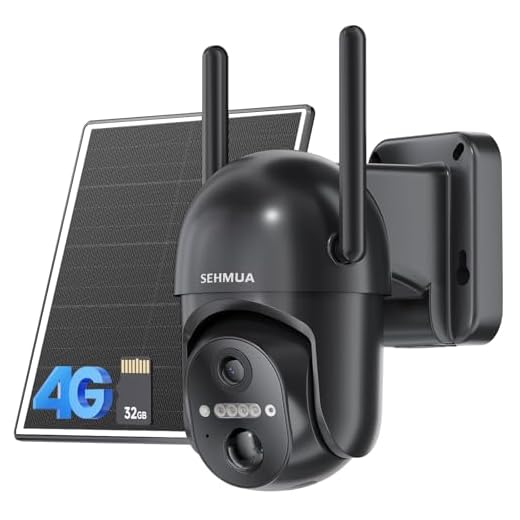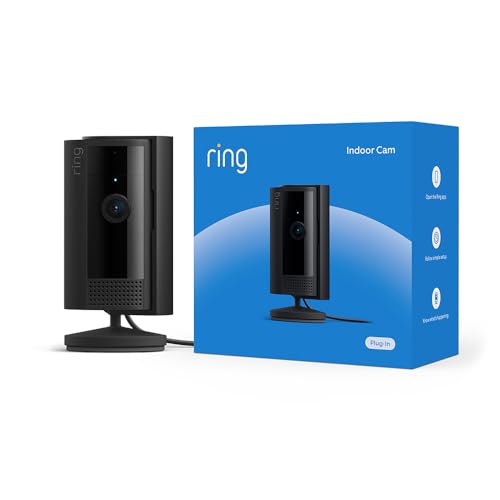




Security cameras are essential tools for protecting your home or business, providing a watchful eye even when you’re not around. With the advancement of technology, many security cameras now offer the ability to connect to the internet, allowing you to monitor your property remotely and receive alerts in case of any suspicious activity.
Hooking up security cameras to the internet may seem like a daunting task, but with the right guidance, it can be a straightforward process. In this article, we’ll walk you through the steps to connect your security cameras to the internet, ensuring that you can keep a close eye on your space no matter where you are.
From choosing the right camera system to setting up your network and accessing your cameras remotely, we’ll cover everything you need to know to ensure that your security cameras are connected to the internet securely and effectively. So, let’s dive in and take the first step towards enhancing the security of your space!
Understanding the Basics
Before you can connect your security cameras to the internet, it’s important to understand the basics of how they work. Security cameras capture video footage and send it to a recording device or a cloud storage service. To access this footage remotely over the internet, you will need to set up a network connection for your cameras.
Most security cameras connect to the internet using either Wi-Fi or Ethernet cables. Wi-Fi cameras are easier to install as they don’t require a physical connection to your router, but they can be prone to interference and signal loss. Ethernet cameras offer a more stable connection but require a wired connection to your router.
Once your cameras are connected to the internet, you can access their live feeds and recordings from anywhere using a computer, smartphone, or tablet. This allows you to monitor your property remotely and receive alerts in case of any suspicious activity.
Choosing the Right Cameras
When selecting security cameras for your system, it’s important to consider a few key factors:
- Resolution: Higher resolution cameras provide clearer images and better quality footage. Look for cameras with at least 1080p resolution for optimal results.
- Field of View: Determine the area you want to cover and choose cameras with an appropriate field of view. Wide-angle lenses are great for capturing more area, while zoom lenses are ideal for focusing on specific details.
- Indoor vs. Outdoor: Make sure to select cameras designed for the environment where they will be installed. Outdoor cameras should be weatherproof and able to withstand harsh conditions.
Additional Considerations
- Night Vision: If you need surveillance at night, choose cameras with infrared night vision capabilities for clear footage in low-light conditions.
- Connectivity: Ensure the cameras you choose are compatible with your internet connection and that they can easily connect to your network for remote viewing.
- Storage: Decide whether you want cameras with built-in storage or if you prefer to use a separate DVR or NVR system to store your footage.
Setting Up Your Network
Before you can connect your security cameras to the internet, you need to ensure that your network is set up correctly. Here are the steps to follow:
- Choose a central location: Place your router in a central location in your home or office to ensure that the Wi-Fi signal reaches all areas where you plan to install the cameras.
- Secure your network: Make sure your Wi-Fi network is password-protected to prevent unauthorized access. Use a strong password and enable encryption (WPA2 is recommended).
- Check your internet connection: Ensure that your internet connection is stable and provides enough bandwidth for the cameras to transmit video footage without interruptions.
- Assign static IP addresses: Assign static IP addresses to your cameras to ensure they always have the same address on the network, making it easier to access them remotely.
- Enable port forwarding: If you plan to access your cameras remotely, you may need to set up port forwarding on your router to allow external access to the camera feeds.
By following these steps, you can ensure that your network is properly configured to connect your security cameras to the internet for remote monitoring and surveillance.
Connecting Cameras to Wi-Fi
Once you have your security cameras installed, it’s time to connect them to your Wi-Fi network for remote access and monitoring. Follow these steps to get your cameras connected:
Step 1: Access Camera Settings
First, you will need to access the settings on your security camera. This can usually be done through a mobile app or a web interface. Look for the network settings option.
Step 2: Connect to Wi-Fi
In the network settings, you will see an option to connect to a Wi-Fi network. Select your network from the list and enter the password. Make sure the camera is within range of your Wi-Fi signal.
Configuring Camera Settings
Once your security cameras are connected to the internet, you’ll need to configure the camera settings for optimal performance.
1. Access the camera’s web interface: Enter the camera’s IP address in a web browser to access the settings page. You may need to log in using the default username and password.
2. Set up motion detection: Enable motion detection and adjust the sensitivity settings to receive alerts when motion is detected.
3. Adjust image quality: Fine-tune the camera’s image quality settings to ensure clear and crisp footage.
4. Configure recording settings: Set up recording schedules, storage options, and video compression settings for efficient video storage.
5. Enable remote access: Configure remote access settings to view live footage and recordings from anywhere using a smartphone or computer.
By configuring these camera settings, you can ensure that your security cameras are optimized for surveillance and monitoring purposes.
Accessing the Camera Interface
Once you have connected your security cameras to the internet, you can access the camera interface to view live footage, adjust settings, and manage recordings. Here are the steps to access the camera interface:
- Open a web browser on your computer or mobile device.
- Enter the IP address of the camera into the address bar. You can find the camera’s IP address in the camera’s manual or by accessing your router’s settings.
- When prompted, enter the username and password for the camera. This information is usually provided in the camera’s manual or can be set up during the initial camera configuration.
- Once you have successfully logged in, you will be able to view the camera’s live feed, adjust settings such as motion detection and recording schedules, and access playback of recorded footage.
Make sure to secure your camera interface with a strong password to protect your privacy and prevent unauthorized access.
Adjusting Video Quality
When setting up your security cameras for internet access, it’s important to adjust the video quality to ensure optimal performance and clarity. Here are a few tips to help you get the best video quality:
1. Choose the right resolution
Make sure to select the appropriate resolution for your security cameras based on your needs. Higher resolutions provide clearer images but may require more bandwidth.
2. Adjust frame rate and bitrate
Optimize the frame rate and bitrate settings to balance video quality with bandwidth usage. Higher frame rates and bitrates can improve video quality but may consume more data.
Setting Up Remote Access
Setting up remote access for your security cameras allows you to view live footage from anywhere with an internet connection. Follow these steps to ensure secure and reliable remote access:
1. Configure Port Forwarding
Access your router’s settings and set up port forwarding to allow external connections to reach your security camera system. Assign a unique port number for each camera to avoid conflicts.
2. Enable Dynamic DNS
Dynamic DNS service assigns a domain name to your dynamic IP address, making it easier to access your cameras remotely. Enable this feature in your router settings and configure it with your chosen domain name.
Monitoring Your Cameras
Once you have successfully connected your security cameras to the internet, you can easily monitor them remotely from any device with an internet connection. Most modern security cameras come with their own mobile apps or web interfaces that allow you to view live footage, adjust settings, and receive notifications.
Make sure to regularly check the camera feeds to ensure everything is functioning properly. Set up motion detection alerts to receive notifications when the cameras detect any movement. This way, you can quickly respond to any potential security threats.








